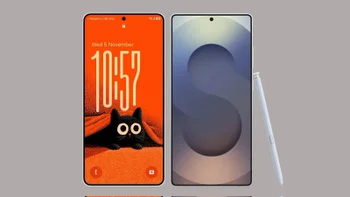After years of turf wars, Xperia phones finally land Sony's Alpha camera mojo

There's something strange going on in Sony phones. While everyone and their dogs are using Sony-invented sensors for some of the best shots in mobile photography, the Japanese maker itself has planted itself firmly in the middle of the pack when it comes to camera quality, even in flagship phones.
There's only one fly in that honey - Sony Xperia pictures are just not that good. There's always been something inexplicable amiss in the camera department of Sony phones, and now we know what might be the reason.
Adam Marsh, Senior Manager of Global Marketing at Sony, sat down for an interview recently and revealed that the camera and mobile departments were simply light on communication. The team that makes the expensive Alpha cameras was understandably reluctant to give away technology found in pro equipment worth thousands of dollars to the lowly cell phone department. The recent management changes at Sony, though, attached mobile to digital imaging, and the first fruit of those labors is the Xperia 1:
Even though we’re one company, there are still sometimes barriers that Alpha doesn’t want to give Mobile certain things, because all of a sudden you have the same as what a £3,000 camera’s got. Now that barrier’s gone a little bit. They’re saying 'okay, we see that having a smartphone and camera that gives you the same experience is a good thing'.
Thus, the Xperia 1 could be the first phone that really hints at Sony's photography prowess instead of carrying only empty marketing buzzwords during keynotes and then deliver ho-hum results in testing. It's got a triple camera set, a first for Sony, OIS, large pixels instead of large resolutions, RAW format support, plus the Eye autofocus and Cinema Pro app brought directly from the digital imaging division.
Why, then, isn't Sony going with its own latest and greatest 48MP camera sensor? After all, it's been a pioneer in the ever-increasing mobile camera resolution, regularly churning out 20+ MP rear and even front cameras before everyone else. The marketing honcho has a satisfying answer:
The Tokyo camera team said 'okay, because of what we want to achieve from a quality point of view, three 12-megapixel cameras will provide us with much better quality than one 48-megapixel camera.' The 48-megapixel module is, for example, not memory stacked, so you can’t do the 960fps super slow motion that we can do on the 12-megapixel sensor. So that’s one example where they went 'okay, you can have this, but actually we then lose this.'
Needless to say, we salute such decisions, as higher resolutions mean smaller pixels that gather less light. Now that the game is called computational photography, however, it's hard to simply excel at the hardware level. The Pixels can do wonders with just one 12MP sensor thanks to the machine learning that Google Photos brought over, and that is not an easy feat to replicate for anyone but Apple that also introduced computational photography with its latest iPhones.
Even Samsung simply bumped the scene recognition options to a larger number instead of going the Google or Apple route, so Sony might have a steep hill to climb and we can't wait to test the Xperia 1 proper to see how it stacks up. Here Mr Marsh had one final thing to say:
Sony as a brand is not going to appeal to everybody. We’re not a Samsung, we’re not a Huawei. But what we will appeal to is people who want quality products where they are able to take amazing pictures or a video, or do something different. Our key USPs will be the screen and the camera. The screen thanks to Bravia, the camera thanks to Alpha. Competitors have different key USPs, which may attract certain customers. But for us, people who know their photography and people who want to buy into that Sony ecosystem of interchangeable lenses, will buy an Xperia 1.
Follow us on Google News












Things that are NOT allowed:
To help keep our community safe and free from spam, we apply temporary limits to newly created accounts: